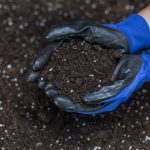Environmental Protection Through Testing | Torrent Laboratory
In the last month, California, Texas, and multiple states on the East Coast have seen some pretty dangerous storms. The intensity and frequency of storms continue to increase. So, other than the apparent damage and disruption, what does all the flooding that comes with rainstorms mean for all of us?
Stormwater may seem harmless as it disappears down stormwater drains during a heavy rainstorm. However, did you know this water can carry a potent mix of pollutants that pose a significant threat to our environment and public health? It can carry hazardous pollutants like carcinogens, industrial chemicals such as PFAS, pesticides, heavy metals, and other contaminants. Thus, stormwater testing has become a vital tool in stormwater pollution prevention and ensuring that regulatory standards are met.
With storm season approaching, it is important to understand why the EPA and several water boards across the country have mandated testing. All industrial companies using chemicals and construction projects that have the potential for harmful discharge are required to test their stormwater runoff and their water sources after major floods or storms. In California, stormwater testing is required four times a year – twice between July and December and twice between January and June.
The Importance of Stormwater Testing
Stormwater testing is important for environmental protection and public health. Stormwater runoff can pick up a wide range of contaminants as it flows over impervious surfaces, including oil and grease from roads, heavy metals from industrial areas, pesticides from lawns and soil, and bacteria from animal waste. When it enters our rivers, lakes, and oceans, this water is harmful to the aquatic ecosystems and degrades water quality. Stormwater testing helps identify these contaminants and allows for targeted stormwater pollution prevention measures. Contaminated stormwater runoff can also pose a threat to public health. Bacteria, chemicals, and other pollutants can enter our drinking water sources, potentially causing waterborne diseases and long-term health problems. By testing stormwater, we can ensure that our drinking water remains safe and free from harmful contaminants.
Regulatory Compliance
As mentioned, government agencies have established regulations to control stormwater pollution and protect the environment. These regulations often require entities like construction sites, industrial facilities, and municipalities to monitor and manage the runoff from their stormwater drainage systems. Compliance with these regulations is essential to avoid fines and legal consequences.
What Does Stormwater Testing Involve?
Stormwater testing involves collecting water samples from various sources, such as stormwater drains, retention ponds, and outfalls, and analyzing them for specific contaminants. The testing process typically includes the following steps:
- Sample Collection: Trained personnel collect samples during and after rainfall events to capture stormwater runoff. Samples are often taken from designated monitoring locations.
- Laboratory Analysis: The collected samples are sent to a certified laboratory such as Torrent Lab for analysis. Common parameters tested include pH, turbidity, total suspended solids, heavy metals (e.g., lead, copper, zinc), and various pollutants (e.g., oils, grease, nutrients).
- Data Interpretation: The laboratory provides data on the concentrations of contaminants found in the samples. This data is then compared to regulatory standards to assess compliance.
- Reporting: Testing results are documented and reported to relevant regulatory agencies. If any violations are identified, corrective actions must be taken to rectify the issue.
Current Regulations on Stormwater Testing
In the United States, stormwater management and testing are regulated primarily under the Clean Water Act (CWA). The Environmental Protection Agency (EPA) oversees the National Pollutant Discharge Elimination System (NPDES) program, which issues permits to facilities that discharge stormwater into water bodies.
Key components of current stormwater regulations include:
- General Permits: Under the NPDES program, different types of facilities, such as construction sites, industrial facilities, and municipal separate storm sewer systems (MS4s), are required to obtain stormwater permits. These permits specify testing and management requirements.
- Monitoring and Reporting: Permit holders must regularly monitor stormwater discharges, report their findings to regulatory authorities, and implement best management practices (BMPs) to control pollution.
- Stormwater Pollution Prevention Plans (SWPPPs): Many permits require facilities to develop and implement SWPPPs, which outline how they will prevent, control, and monitor stormwater pollution.
Stormwater testing is an essential tool in safeguarding our environment, protecting public health, and ensuring regulatory compliance. Monitoring and managing stormwater runoff can reduce pollution, preserve our water resources, and contribute to a cleaner, healthier future. Thus, finding the right testing laboratory is a critical first step. It’s important to find out what testing technology is used, if the equipment is up-to-date, and if the lab and the lab technicians have the certification and credentials to deliver high-quality testing. Torrent Lab uses advanced stormwater testing technology and follows the procedures defined by regulators. We offer testing services, stormwater runoff analysis, and stormwater monitoring and remediation plans. We work closely with municipal, regional, state, and federal regulatory agencies to stay on top of regulatory requirements.
As regulations continue to evolve, businesses, municipalities, and individuals must stay informed and actively participate in stormwater management solutions. Together, we can make a significant impact in mitigating the harmful effects of stormwater pollution on our planet.




